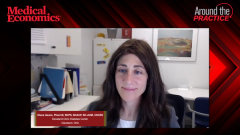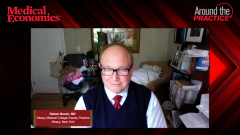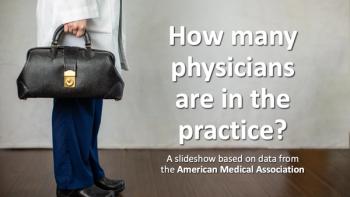
Multidisciplinary Collaboration of Care in Diabetes and Cardiovascular Disease
A panel of experts discuss their experience with multidisciplinary collaboration of care between primary care physicians, cardiologists, endocrinologists, and pharmacists in patients with diabetes and cardiovascular disease.
Episodes in this series

Dhiren Patel, PharmD, CDE, BC-ADM, BCACP: Absolutely. That segues nice into our next section. What I heard from all of you is like it doesn’t really matter which guidelines we look at; we see that these medications are elevated within those guidelines. They tend to have a lot of pleiotropic effects, some of which we’ll talk about more, where you’re seeing 3-point MACE, renal heart failure, all of these additional benefits in addition to original use cases of some of these drugs. I really think that these drugs, for the first time, have brought together a lot of disciplines. For the first time we’re talking to the heart failure team, we’re talking to preventive cardiology, we’re talking to the renal team, we have a multidisciplinary panel here. I would love your guys’ thoughts on how you guys are managing and how you guys are collaborating with some of your folks at your institutions. I know it’s not easy, right, especially if you’re taking care of a patient with diabetes and heart failure, whose swim lane is it in? So I’d love to see how you’ve dealt with this at each of your institutions and how the teams are coming together. Dr. Busch, maybe we’ll start with you.
Robert Busch, MD: Personally, when I’m managing a patient with diabetes, I’m doing the lipids, the blood pressure, and the diabetes drugs. But if I see the cardiologist initiate, I will feel badly if I didn’t initiate the SGLT-2 [sodium-glucose cotransporter-2] in my patient with diabetes. They come prepackaged to the cardiologist with that. There are a variety of types of cardiologists in our community. Some put it in the note, some don’t do anything, and some actually initiate it. The ones who initiate it, I personally call them or text them and say congratulations, you’re an honorary endocrinologist, that’s great that you’re doing that. The ones that put it in the note, when the patient goes back the second go-round, then they’ll probably initiate it if the primary care doc didn’t do it. But there are some who do not do that because it’s a diabetes drug and they don’t want to politically step on the primary care’s toes. We do lipids, I do PCSK9, I am not stepping on the cardiologist’s toes. I do icosapent ethyl if the triglycerides are high. We can each benefit the patient. If you’re seeing the patient and they’re not on it, do something. That’s our job.
But it varies in every community. I’m sure maybe in the Boston community, everyone is more aggressive because you’re in the midst of Harvard.
Dhiren Patel, PharmD, CDE, BC-ADM, BCACP: Dr. Isaacs, we’ll go to you. How is it in Cleveland?
Diana Isaacs, PharmD, BCPS, BCACP, BC-ADM, CDCES: We’ve taken a few different strategies. One thing we have is actually a comprehensive diabetes clinic, where patients see cardiology and endocrinology on the same day, which is fantastic because then we can have a conversation and collaboratively decide what agents to start and everything. Another model we’ve had, too, because we use a lot of pharmacists to see patients in between their usual provider visits, is that I’ve been working with one of our heart failure pharmacists to initiate SGLT-2 inhibitors in these patients. What has been nice about that is because, yes, it is easy to start an agent, but some of these patients, they’re on complicated insulin regimens already. It’s nice to have that direct collaboration where I can say, oh, we should probably decrease the insulin by this amount based on their current glucose levels, and she can say, oh, we need to back off these agents, like this diuretic. It’s a really nice to have that collaboration.
Dhiren Patel, PharmD, CDE, BC-ADM, BCACP: Again, how is it in Boston?
Muthiah Vaduganathan, MD, MPH: I’ll echo that. I think there’s tremendous variation by practice and by cardiologist. There has been a convergence of quality improvement efforts in the hospital setting to optimize diabetes care as well as in non-diabetic patients with heart failure or CKD, to optimize SGLT-2 inhibitors in those folks. In the ambulatory practices, there has been some quality initiatives that have been variably successful. We had one of my colleagues, an endocrinologist, embedded in our cardiology clinic more for troubleshooting rather than direct comanagement for each of our patients. That worked out quite well in scenarios in which we had maybe subtle questions that may have posed barriers to otherwise starting a therapy.
In general, I would say that the use patterns and the comfort related to the SGLT-2 inhibitors have been picking up, and I think especially in heart failure and CKD [chronic kidney disease] where there is really fixed dosing and almost rare need for adjustment of any other therapy and very little actual monitoring as well. I think it’s actually much simpler than many of the other therapies that we use in heart failure care, for instance.
In contrast, the use of GLP-1 [glucagon-like peptide-1] receptor agonists by cardiologists remains dismally low, even in at-risk patients. That is something that I think continues to need to be disrupted, and hopefully, if oral therapies prove to be successful in modifying cardiovascular outcomes, that may also change.
Dhiren Patel, PharmD, CDE, BC-ADM, BCACP: Do you think that’s a function of, you know, Dr. Busch mentioned now you have a primary prevention indication for one of the GLPs. Is it more a function of you have not seen the data in patients without diabetes, probably a bigger driver of it? You certainly said that you are seeing an uptick in the SGLT-2 class as it starts to get an indication outside of diabetes status, because obviously injectables are not new to you guys. You have dealt with the Heparins and the Lovenoxes and all that and the PCSK9 inhibitors. It’s not the injection, at least to my knowledge, but you can tell me if I’m incorrect there. Do you think it’s more as that body of evidence starts to grow outside of patients with diabetes, you would start to see some traction there?
Muthiah Vaduganathan, MD, MPH: To me, I still do think that the injection issue is a big barrier. We saw this with the PCSK9 inhibitors. Of course, there was a major cost barrier as well. But the use in the community, despite the overwhelming evidence, is markedly low for PCSK9 inhibitors in eligible patients. And I think barriers related to resources, time, and personnel for injection teaching, despite availability of online resources and otherwise more easier pens to use, I think that most cardiologists would feel uncomfortable in titrating and initiating these therapies. The metabolic and glycemic effects perhaps are a bit better and more substantial with the GLP-1 receptor agonists, and so that need for adjustment of concomitant therapies is probably also more relevant to that class of therapy. Again, that may pose another barrier.
Transcript edited for clarity.
Newsletter
Stay informed and empowered with Medical Economics enewsletter, delivering expert insights, financial strategies, practice management tips and technology trends — tailored for today’s physicians.












